During the recently forced intermission, MDFF Greece invited Formafantasma to be part of our New Forms of Presence initiative with a virtual tour dedicated to the Italian duo’s latest major exhibition “Cambio.”
This narrative journey in www.cambio.website is thoroughly presenting the exhibition’s layers and sections, along with a series of interviews conducted by Formafantasma with practitioners who are very much linked and influential to the timber industry, such as experts from the fields of forestry, science, art, conservation, engineering, policymaking, and philosophy. The virtual tour acts as a design compass, providing us with the exhibition’s coordinates, where the core of Formafantasma’s research, creative process, and distilled outcomes lie.
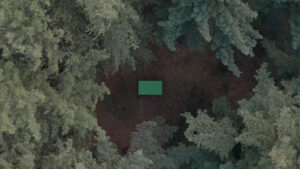
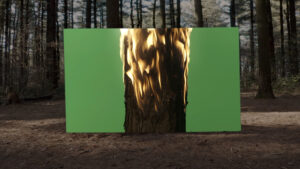
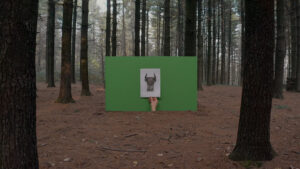
The exhibition Cambio at the Serpentine Galleries, London ( 4 March 2020 – Final Date TBA) is currently closed, but accessible online at Cambio. Interviews, conversations, and readings related to the exhibition, as well as around design, ecology, and sustainability, can be found on the studio’s Instagram profile @formafantasma via the Antenna Fantasma series.
Antenna Fantasma was a weekly live program produced during the lockdown in response to the temporary closure of Formafantasma’s Cambio exhibition as a way of exploring ideas of ecology and design examined in the show through conversations with designers, architects, academics, scientists and curators who contributed. Guests included Paola Antonelli (Senior Curator of Architecture and Design, and Director of R&D at MoMA), Stefano Boeri (Architect, professor and Chairman of Fondazione La Triennale in Milan), Rebecca Lewin (Curator of Exhibitions and Design at the Serpentine), Mauro Agnoletti(Director of the Laboratory for Landscape and Cultural Heritage, University of Florence), Sissel Tolaas (Smell Researcher & Artist), Phillip Pattberg (Professor of Transnational environmental governance and policy at VU, Amsterdam), Paulo Tavares (Architect, Writer & Researcher), amongst others. The Serpentine Galleries and Koenig Books have published an accompanying exhibition catalogue.
Cambio is the third design exhibition organized by the Serpentine Galleries: The first is Design Real, 2009, and was curated by Konstantin Grcic and focused on the industrial objects. The second, in 2014, was titled Design Is A State Of Mind by Martino Gamper.
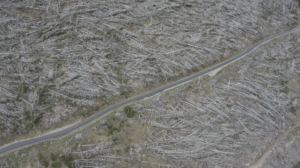
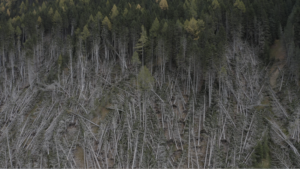
A multidisciplinary research-driven show co-starring: Marco Carrer, University of Padua, Padua; Emanuele Coccia, École des Hautes Études en Sciences Sociales, Paris; Vanessa Richardson, Environmental Investigative Agency, London; Gaia Amazonas, Bogotá; Het Nieuwe Instituut, Rotterdam; Magnifica Comunita di Fiemme, Cavalese Naturalis Biodiversity Centre, Leiden; Philipp Pattberg Vrije Universiteit, Amsterdam Royal Botanic Gardens, Kew, London; Royal Museum of Central Africa, Tervuren Thünen Institute, Hamburg; Sissel Tolaas, Smell Researcher and Artist; Victoria and Albert Museum, London
Formafantasma team: Riccardo Badano, Simón Ballen Botero, Gregorio Gonella, Jeroen Van De Gruiter, Johanna Seelemann, Peter Sorg
Exhibition curated by: Rebecca Lewin, Curator, Exhibitions and Design Natalia Grabowska, Assistant Curator
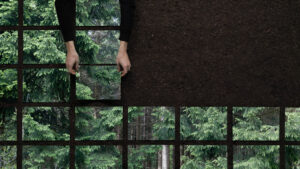
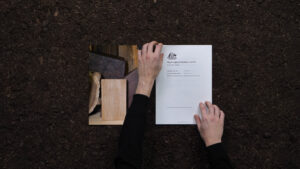
“…Today I am going to give an introduction to our exhibition “Cambio” at Serpentine Galleries in London, which is closed at the moment because of Covid-19, but it’s still possible to access some of the contents of the exhibition, and others that are not in the show through the website cambio.website
“Cambio was a commission that we received already a few years ago, two years ago, by Serpentine Galleries that wanted to do a third design exhibition after Konstantin Grcic and Martino Gamber. The conversation with us was since the beginning very clear in the sense that their interest in Design is of course very deep, but they didn’t want to have a show displaying products but more something related to the ideas and a way of working of designers to display ideas and processes more than final products. This we thought was very soothing for our approach, and something else that Hans always mentioned was that our approach was very much collaborative and involving other disciplines, and he thought this could have become a very good way of approaching our intervention in the spaces of Serpentine.
We decided after considering different options to focus on a hyper subject, the one of the wood industry, the timber industry, most specifically the governance of the timber industry. The reason why we decided to do so, it’s because we as designers, we often are asked to shape materials into desirable objects, desirable products, or even surfaces. Nevertheless, we believe that for the development of a more ecological way of thinking and intending discipline on Design, it is also important to consider the infrastructure upon which Design is formed. What I mean by infrastructure is the way materials are extracted, distributed, processed so that possibly Design can develop more aware responses to tackle our structure that is, for instance, in this case, the timber industry…” _Excerpt from the words of Andrea Trimarchi and Simone Faressin in the video
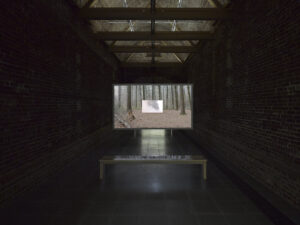
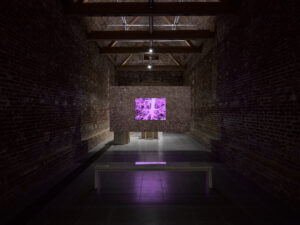
For Andrea Trimarchi and Simone Farresin engaging is very important. Similarly, knowing humans and shifting this knowledge in their design conversation when questioning the relationship of design within larger systems is equally important.
During a time of climate crisis, Formafantasma implements this exact knowledge and interest in pondering upon human behavior, opening up to exchanges that look at design’s ecological, cultural, and political responsibilities.
Their work is considerably about communicating and developing a discourse by involving the user in the production process. From motivating disciplines that focus on a material’s expressive potential and its origins, and using their words as a design tool, a medium of exchange and development of ideas, re-channeling information and enabling new perspectives to surf our fast-changing era.
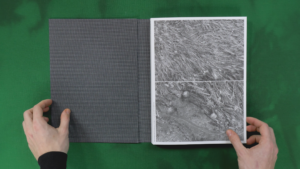
The designers’ need to embark on a dialogue with their audience is also evident in the dedicated website that Trimarchi and Farresin put on every time they do a project. The “Ore Streams” presented Formafantasma’s study on the state of e-waste management, while their most recent study, commissioned by the Serpentine Galleries Cambio is a gentle urge to delve deeper and grow our understanding when it comes to the complexities of timber extraction, production, conservation, and distribution by employing a collection tank of their research outcomes represented in an archive of documents, videos, books, and articles.
The Italian duo immerses in an observing journey where associations and principal elements result as the pillars of the exhibition. In Cambio, we attest to a manifold exploration of the mechanism, history, and impacts within the wood industry, as well as an inspection of the relationship between man and other living species that addresses design from a holistic, and ethical perspective, exemplifying a process that is both pragmatic and intuitive.
Analyzing design’s ecological and political responsibilities, Formafantasma addresses the trees as living structures, and breathing entities with their own rights and value system, while concurrently questioning the natural resource of tree consumption within the global industries.
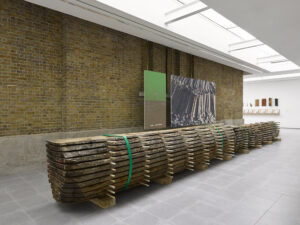
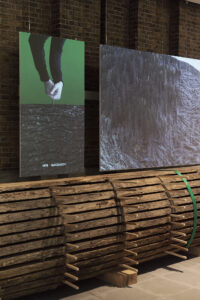
Starting with looking into the rights of non-humans, animals, and plants, the designers gradually create a stratification of awareness for what’s out there, specifically when it comes to the life and rights of plants. From the history of timber and its course of human consumption, towards its supply chain patterns that humans have constructed to support and expand its use. From its intractability, and forward to the future of a wood’s survival in relation to human consumption.
Stemming from the medieval Latin cambium, standing for “change, and exchange, Cambio references the trajectory, in terms of a compelling memory account, a record of the tree’s past. The cambial layer, a membrane that runs around the trunk of trees, produces wood on the inside, and bark on the outside, enabling it to keep growing, adapting and morphing thanks to its resilient nature.
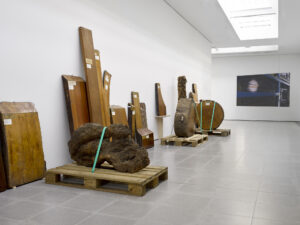
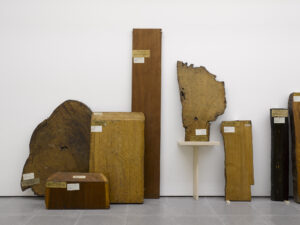
Like the rings of a tree, the exhibition brings forth a mixture of films, installations, speculative proposals, sculpture, treasured tree specimens, and case studies that provide insight into the way the wood is sourced and used.
The exhibition exemplifies rare hardwoods first displayed in the Great Exhibition of 1851, revealing trees logged to the point of extinction to displayed furniture and seating designed by Formafantasma created by a single tree blown over in a storm in northern Italy in 2018.
In other respects Ikea’s “popular” totem pole stool (the Bekväm, reliable provider of kitchen steps and houseplant stands to countless homes around the world), sees a parallel presence through a recreated design by Formafantasma in seven different kinds of wood, from oak to chestnut and cherry, mounted following the growth duration of each tree before it was logged, and the amount of dioxide the given tree stored in the process. At the same time, in a work including several cardboard items, titled 5 Years, we learn about the amount of time it will take a single pine tree to reabsorb the same amount of carbon dioxide released when each pile is discarded.
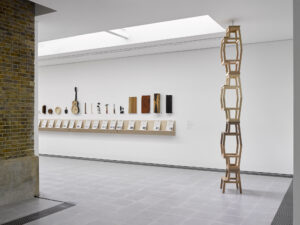
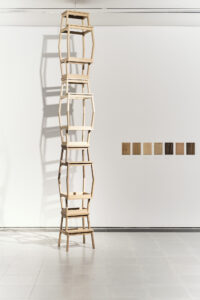
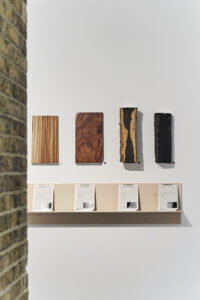
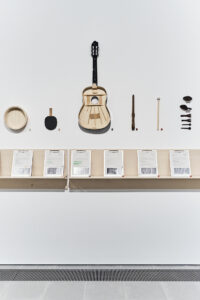
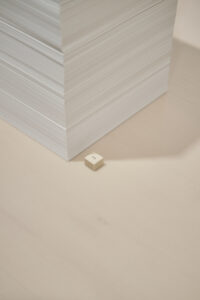
The above exemplars allege to the meaning of sustainable wood products, which in order to adhere to the values entailed in this term, as per the designers, the products need to have at least a service life that abides by the same length of time that it took for the tree to grow. This idea frankly questions the mass production model that characterizes the furniture industry based on the continuous renewal of the source material and discarding of the item.
The show goes on counting a series of wooden objects lined up in a row, a hammer next to a ping-pong bat, a guitar next to a brush, “confessing” to a material analysis beneath each item regarding the amount of endangered timber featured in these everyday objects, an actuality confirmed by Interpol’s accounts about thousands of similar illegally sourced wood products yearly.
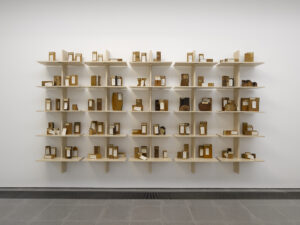

The latter is reinforced in a colonial spectacle sourced from the Kew Gardens wealthy inventory that sees an ample yield of exotic timber specimens dating back to the Great Exhibition of 1851, known as the Economic Botany Collection. The Collection was intended to encourage designers to be inspired by this vast catalogue of potential materials coming from the colonies, adhering to the message to use more of them.
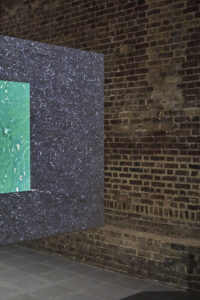
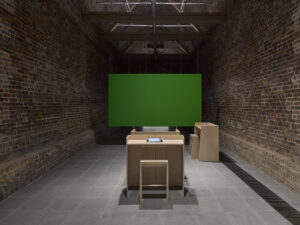
Cambio is an attempt to look this nature’s wonder material afresh, question our insatiable and almost ingrained, and automatic desire for new designs, raise awareness of the choice we always have — even when is not so evident — to choose “well” both as conscious designers and consumers, as well as metabolize the fact that the future of design is conditioned by the ability to decipher emerging environmental consciousness into a regenerated realization that will promote collaborative responses.
Formafantasma will continue its investigation into the industry as part of the Geo Design masters course at the Design Academy Eindhoven in September.
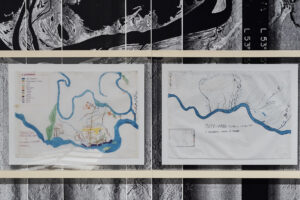
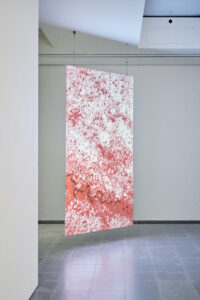
“Cambio”@ the Serpentine Galleries
SOUTH GALLERY
The exhibition opens with two pieces that introduce the physical matter of wood and its properties; a two-screen projection, and two sections of a tree trunk. Together, they offer a re-evaluation of trees – as sources of information, constantly recording global climate change, as the solution for mitigating these changes by storing carbon dioxide as they grow, and as a warning against over-management and monocultured forests that are more vulnerable to intense weather events. The smell, developed by smell researcher and artist Sissel Tolaas, evokes the wet earth and flora of a forest, offering an immersive reminder of what is at stake when we lose this environment.
EAST GALLERY
This section of the exhibition presents forensic research undertaken by Formafantasma with a number of different scientific institutions into the data that can be found in wood. Following on from the coring procedure shown in the first gallery space, wood products are investigated as holders of carbon dioxide, as records of their origins even while they undergo carving, pulping (for paper) or fire (for charcoal). The analysis of these mundane objects, many of which are still produced from protected species, can help to regulate logging practices around the world, and offer manufacturers, designers and users better information about the impact of their material choices.
SOUTH POWDER ROOM
Constructed in the format of a visual essay, this film investigates how the industry of timber has evolved over time. It asks how a networked understanding of materials can be applied to a more holistic approach to design, and draws connections between timber’s physical materiality and the abstract but pervasive conditions of exploitation, colonialism, and consumerism.
NORTH POWDER ROOM
One side of this central space is dedicated to a film that focuses on the governance of the timber industry and how this is structured today, touching upon the major European and global regulations and regulatory bodies involved in it. The four reading points on the other side, meanwhile, have been designed by Formafantasma, and offer direct access to a website that holds reference materials collected by the design studio over the course of the past eighteen months. These include filmed interviews with the specialist collaborators that informed the projects on display in this exhibition, reading materials, reference images and links form a living archive of the designers’ research-led practice. Together, the resources in this space aim to offer a greater level of transparency, both in the research and thinking of design practice, and in the structure of a global industry.
NORTH GALLERY
The objects and images on display in this space have all been sourced from the Economic Botany Collection in Kew Gardens and the storage spaces of the V&A (shown in the film at the end of the gallery). The wood samples from Kew were first displayed in the Great Exhibition of 1851 and the International Exhibition of 1862, close to this building, and were intended to be used like a catalogue of the British Empire’s timber resources. The V&A can also trace its history to these exhibitions, but rather than holding raw materials, it has amassed a collection of furniture and objects that record the application of many of these species of wood by designers and makers. Real and virtual images are overlaid in the film at the end of the space, pointing to the missing links that connect an object with its place of origin, and highlight contemporary design’s ongoing appetite for an endless library of materials.
WEST GALLERY
The combination of images, text and film in this section of the exhibition takes a view of forestry that moves beyond the extraction of resources and attempts to understand the complex ecosystems that forested regions contain. It does so by bringing together approaches to the governance and management of both European and Amazonian forests, and compares changes in these approaches over time and from different geopolitical perspectives.
VIDEOS
1858, 2020 (5:56”, 2020)
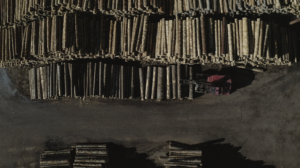
Courtesy of Formafantasma, Production by C41
Complete video: https://vimeo.com/394230042/49d929e2bb
Cambio (23:21”, 2020)
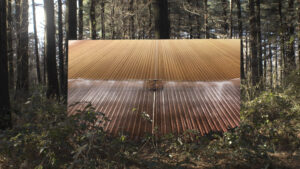
Courtesy of Formafantasma, Production by C41
Complete video: https://vimeo.com/394232651/b56c7d7e3c
The film starts with the appearance of primordial plants on Earth, their evolution into trees, and the subsequent flourishing of human life across the planet. It continues with the global expansion of the timber industry in conjunction with the European imperialist agenda, and its later shift towards the development of sustainable forestry practices and environmental conservation. Shot in a former Italian plantation for paper production, it makes use of chroma key compositing – a process by which it is possible to ‘layer’ images over existing footage by introducing green screens into the frame while shooting, and collaging other images or footage in later. Various different colours have been used in television and film to achieve this effect, but green has become one of the most commonly used – as with most technologies – due to human features. The human eye evolved to differentiate movement and depth against the green of the forest, and what has become an instinctive disregard for flora in favour of the potentially dangerous fauna has been called ‘plant blindness’. Here, the forest is never a background – it is the subject matter and focus of the film.
Seeing the Wood for the Trees (19:24”, 2020)
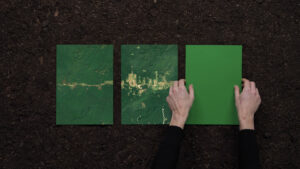
Courtesy of Formafantasma, Production by Formafantasma
Collaboration: Vanessa Richardson, European Investigation Agency
Complete video: https://vimeo.com/394186750/7a3d3a64fe
The film Seeing the wood for the trees addresses the current state of the timber industry, showing images and documents set against the forest floor and also using the green screen technique that was employed for Cambio, shown in the next room. The text of the voiceover was conceived in conversation with Formafantasma and written by Vanessa Richardson of the European Investigation Agency. Organisations like the EIA fight against the practice of illegal logging and to uphold the principles of sustainable forestry using international certification systems such as the FSC and PFSC. Like the film in the space next door, Seeing the wood for the trees employs green screen, or chroma key compositing, to illustrate the text, but offers only the forest floor as a background; the viewpoint of the camera, pointing straight down, echoes the film’s discussion of forest governance ‘from above’.
200/500μm (10:20”, 2020)
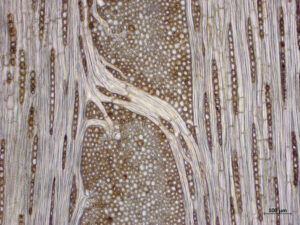
Courtesy of Formafantasma, Production by Formafantasma, Collaboration: Thünen Institute, Hamburg
Complete video: https://vimeo.com/394202849/8276b1a14b
The archive of lost forests (9:46”, 2020)
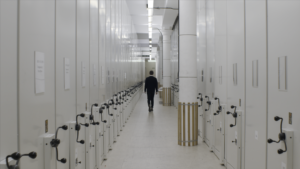
Courtesy of Formafantasma, Production by C41
Complete video: https://vimeo.com/394229138/604d9160e8
The furniture pieces in the Victoria & Albert Museum’s storage, shown in this film, were assembled as examples of exceptional craftsmanship and industrial production. Conceived as a source of inspiration for the development of a formally and technically sophisticated design culture in Britain, this collection of objects showcases the properties of different woods and the skill of designers and makers. However, European design also had to adapt to reductions in the availability of certain species due to overlogging. Nineteenth-century illustrations of British settlements in Jamaica can be found reflected in the polished surfaces of some of the V&A’s furniture. Jamaica was the source of a great deal of mahogany that can now be found in Europe, initially for shipbuilding, which helped Britain’s expansion of its colonies, and later for cabinet-making. Although the exact source of the wood in the V&A furniture cannot be determined, the origins of the wood samples in the Economic Botany Collection at Kew have been carefully catalogued. The most contemporary collection included in the film is the virtual wood library offered by the popular 3D rendering software Keyshot, which includes rare and endangered woods as available for designers to apply to the surfaces of their forms. Digital tools such as this can be used to simulate finished objects, and without a critical intervention into context or sustainability, appear to perpetuate the myth of an endless supply of materials.
Quercus (13:06”, 2020)

Courtesy of Formafantasma, Production by Formafantasma, Collaboration: Emanuele Coccia
Complete video: https://vimeo.com/394196768/95ba3d13e9
This film has been produced by manipulating a Lidar scan of an oak forest in Virginia. Lidar technology, which comes from the terms ‘light detection and ranging’, uses lasers to scan and record large surface areas and has often been used in cartography and archaeology. More recently, it has been adopted by the timber industry in order to selectively log trees. Like the RADAM maps nearby, however, it could be repurposed – here, it provides an opportunity to consider humans from the point of view of the trees, with a voiceover written by philosopher and botanist Emanuele Coccia. Coccia’s text questions our own sense of dominance, observing rather the degree to which humanity is dependent upon the form and physicality of trees, from the perspective of an imagined forest. It suggests a crucial shift in perspective if we are to find more radical ways of living with and protecting these complex ecosystems – one that stems from the understanding that humans and trees are inextricably interlinked.
About Formafantasma
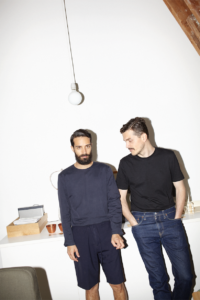
Andrea Trimarchi (1983) and Simone Farresin (1980) are Formafantasma, an Italian design duo based in Amsterdam, The Netherlands. Their interest in product design developed on the IM master course at Design Academy Eindhoven, where they graduated in July 2009.
Since then, Formafantasma’s practice has been characterised by experimental material investigations and detailed explorations of the history, context and implications of the transformation of natural resources into commodities. In perceiving their role as a bridge between craft, industry, object and user, they are interested in forging links between their research-based practice and a wider design industry. As a result, works by Formafantasma have been commissioned by a variety of partners including Fendi, Max Mara – Sportmax, Hermès, Droog, Nodus rug, J&L Lobmeyr, Gallery Giustini / Stagetti Roma, Gallery Libby Sellers, Established and Sons, Lexus, Krizia International and Flos.
Whether designing for a client or investigating alternative applications of materials, Formafantasma apply the same rigorous attention to context, process and detail to every project they undertake. The added nuance for the duo is that they do so with an eye to the historical, political and social forces that have shaped their environments.
Their work has been presented and published internationally and museums such as New York’s MoMA, London’s Victoria and Albert, New York’s Metropolitan Museum, the Chicago Art Institute, Paris’s Centre Georges Pompidou, the TextielMuseum in Tilburg, the Stedelijk’s-Hertogenbosch, the Stedelijk Museum Amsterdam, MUDAC Lausanne, the Mint Museum of Craft and Design in North Carolina and the MAK Museum in Vienna have all acquired Formafantasma’s designs for their permanent collections.
In March 2011 Paola Antonelli of the Museum of Modern Art in New York and esteemed design critic Alice Rawsthorn listed their studio amongst a handful of practices that would shape the future of design. Andrea and Simone are lecturing and heading workshops in various Universities and Institutions. Currently they are teaching at the ‘Well Being’ and ‘Contextual Design’ Departments of the Design Academy Eindhoven. This exhibition will become the foundation of the new Masters programme that Formafantasma are leading from autumn 2020 at the Design Academy Eindhoven, titled ‘GEODESIGN’. Since October 2016, they have been at the head of the Design bachelor at MADE Program in Siracusa, Italy.
Words and Content Curation by Annie Markitanis, Director MDFF Greece & Cyprus, Partner of the Milano Design Film Festival